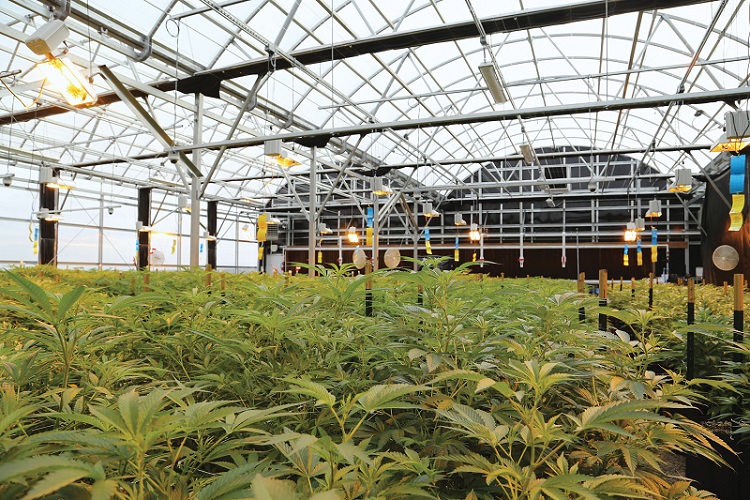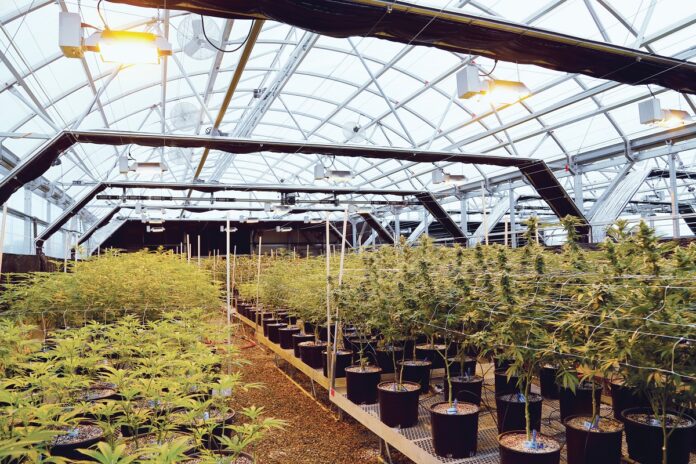Arizona, New Jersey, Montana, South Dakota, and Mississippi legalized recreational or medical cannabis or both during the November 2020 election, generating more opportunity than ever before for growers to thrive in an emerging cannabis industry. More states are expected to introduce cannabis legislation in 2021, so opportunities will continue to appear as legalization sweeps the nation.
States rumored to be introducing cannabis legislation in the coming year include New York, Connecticut, and Virginia. Federal legalization may even be possible in the not-too-distant future, as the Marijuana Opportunity Reinvestment and Expungement (MORE) Act passed the House of Representatives in December 2020. With some polls saying 68 percent of Americans support cannabis legalization, the issue transcends politics.
Every state has its own distinct climate, and each of these climates presents unique challenges for cannabis growing. From the threat of extreme temperatures to catastrophic storms, growers need to get creative to ensure they produce healthy, quality cannabis and—most importantly—become a profitable operation.
New cultivators often gravitate toward indoor grows because they are protected from outside conditions that can dramatically affect plants, but indoor growing may not be the best option. Compared to outdoor grows, indoor growing wastes the opportunity to use environmental benefits and drives up energy costs. A third option, greenhouse cultivation, provides the same protection and level of control as an indoor grow while also utilizing the natural environment’s energy efficiency.
Because a high percentage of cannabis has been grown indoors for many years and illegal greenhouse operations traditionally have been low-tech high tunnels, people often (mistakenly) perceive indoor cannabis as high-quality and greenhouse cannabis as poor quality. In fact, today’s high-tech greenhouses enable growers to produce higher quality, higher yields year-round by creating an environment in which crops thrive.
With new opportunities all around the country for cannabis cultivation, growers should consider the local climate before taking the leap into becoming a full-blown cannabis grow operation. Potential cultivators may find themselves asking, “My state legalized cannabis. Now what?” If they want to cultivate high-quality cannabis and differentiate themselves from their competition without the added expenses an indoor grows requires, greenhouse growing may be the answer.
Greenhouses are a more versatile and reliable option compared to outdoor and indoor grows. Outdoor grows provide little protection from diseases, pests, and inclement weather, and lack of control over lighting forces growers to wait until fall to harvest. Indoor grows, however, provide the same level of protection and environmental control as greenhouses, but their energy costs can be astronomical.
According to a study conducted in 2011, the cannabis industry at that time spent $6 billion per year on energy, in large part because indoor grows require twelve to eighteen hours of supplemental lighting, depending on the stage of the crop. Indoor cannabis grow operations spent about $55 per square foot per year on energy, while normal greenhouses spent only about $5. This data may be dated, but the trends continue and likely became more pronounced as more legal grow operations emerged.
The carbon footprint of indoor grow facilities is comparable to industrial manufacturing; the amount of energy needed to power indoor facilities is staggering. Consumers today are environmentally conscious; they want to see a product that is sustainable. Greenhouses can achieve exactly that, given the amount of power needed in comparison to an indoor operation.

Overall, greenhouses are not bound by the same limitations as indoor grows. They can be far more versatile, flexible, energy-efficient, and cost-effective, which creates a profitable, viable grow operation compared to their indoor counterparts. The level of control stays the same, but with the added benefit of utilizing the natural environment to make cultivation less labor-intensive and more energy efficient. These factors combine to make an operation more profitable and produce a higher quality cannabis product.
In an indoor grow, cultivators are entirely reliant on supplemental lighting for at least twelve hours a day; often more. Greenhouses allow natural light to filter into the structure, which benefits both the plants and the operation’s bottom line. With a greenhouse, growers can utilize natural sunlight to keep energy costs down and produce healthier plants.
One can’t compare the power of the sun with artificial lighting. The amount of light intensity and spectrum the sun provides are higher by far than any artificial bulb, not to mention sunlight doesn’t cost anything. Sunlight can help produce healthier, bigger, and stronger plants. This is something that can’t be replicated in an indoor grow.
Supplemental lighting easily can be added to a greenhouse, so even on overcast days crops will get a full day’s worth of light. With quality lighting in abundant supply, growers will need to figure out how to increase the number of harvests per year. The answer is simple: Light deprivation.
Light deprivation systems should be added to a greenhouse, and they should be automated so growers needn’t manually pull heavy curtains, saving on labor costs. Light deprivation is especially important as growers must have control over the vegetative and flowering stages of their cannabis plants. Light deprivation systems provide savings on labor costs while providing multiple harvests throughout the year. These combine to create a more efficient and more profitable operation.
Automation can make a crop as labor-intensive as cannabis far easier to cultivate with the help of timers, controllers, and other devices. Heating and ventilation may be a bit costly, but automation makes up for these costs by running the services only when necessary and reducing the labor requirements. Almost every process for a cannabis operation can be automated, including lighting, irrigation, fertigation, and light deprivation. This reduces the labor required to care for cannabis plants while also making these processes more precise for a healthier grow and higher-quality crops.
Consumers today are environmentally conscious; they want to see a product that is sustainable.
Automation equals precision, which is crucial when growing a crop commercially. Greenhouses may be equipped with sensors and controllers to automate the environmental equipment. All these components work in harmony to bring the environment inside the greenhouse to optimal levels.
Whether in South Dakota or Arizona, a greenhouse provides the ability to completely control the growing environment despite the temperature or humidity outside. Heating and cooling systems may be added to maintain the perfect temperature year-round. Energy-efficient units can help keep utility costs down as well. Greenhouses enable growers to provide a consistent and uniform climate to keep cannabis plants healthy and thriving, no matter the season.
Controlling humidity is paramount in a cannabis grow, and indoor grow operations are difficult and often costly to ventilate. Greenhouses allow for easy and energy-efficient ventilation, helping growers offset the humidity more effectively. Roll-up sides reduce the energy requirements for ventilation in a greenhouse as compared to a completely enclosed indoor grow.
With an indoor grow, the operation is boxed into the space it initially occupies. To expand, an entirely new space must be constructed, often at a steep cost in time and materials. Greenhouses, on the other hand, are easily expandable, so they can grow as an operation grows. Additions can be added quickly and with ease. This is especially important for fledgling operations in newly legalized states, as they likely will experience large periods of growth as their cannabis markets evolve.
With the public opinion of cannabis legalization shifting and more states legalizing, new opportunities for cannabis cultivation are opening across the country, making now a better time than ever for growers to enter the industry. This creates a wealth of opportunities for cannabis cultivation in a variety of markets and climates.
Installing a greenhouse can help growers set themselves apart from the competition with their superior products and multiple yearly harvests. Greenhouses have evolved over the past couple decades and are showing up in markets across the United States. Growers are achieving high-quality cannabis in high-tech greenhouses, which can be useful tools to help them achieve their goals.

Janine Coppola is a junior copywriter for GrowSpan Greenhouse Structures. She majored in English at the University of Connecticut and graduated in 2019 before joining GrowSpan in August 2020. For more than forty years, GrowSpan has provided the horticulture industry with high-quality growing structures.

Adrian Valois is a greenhouse specialist for GrowSpan Greenhouse Structures. He majored in biosystems engineering with a focus in controlled-environment agriculture at the University of Arizona. Since 2019 he has been part of the GrowSpan team, where he helps the forty-year-old company design and install high-quality growing structures.










